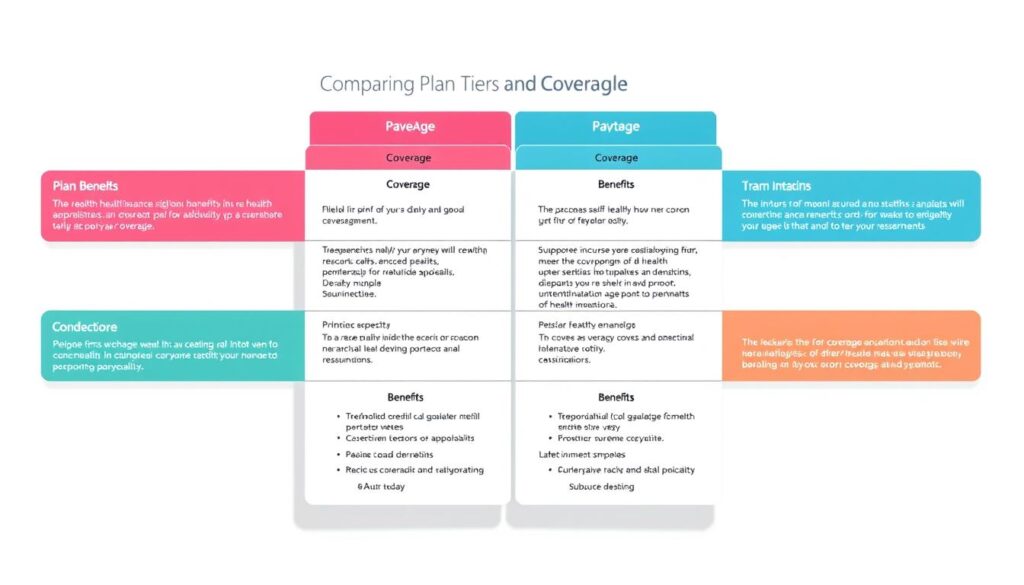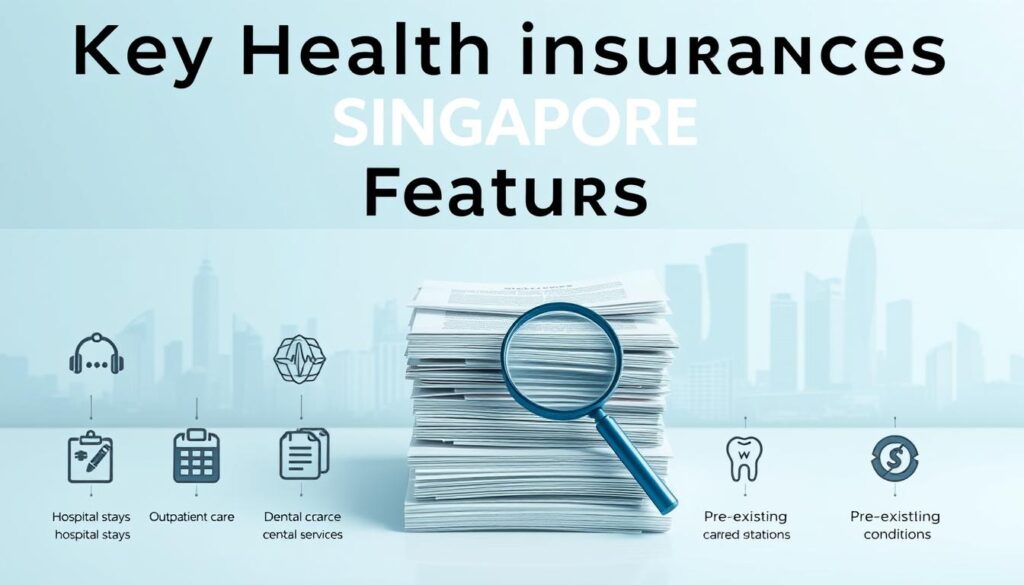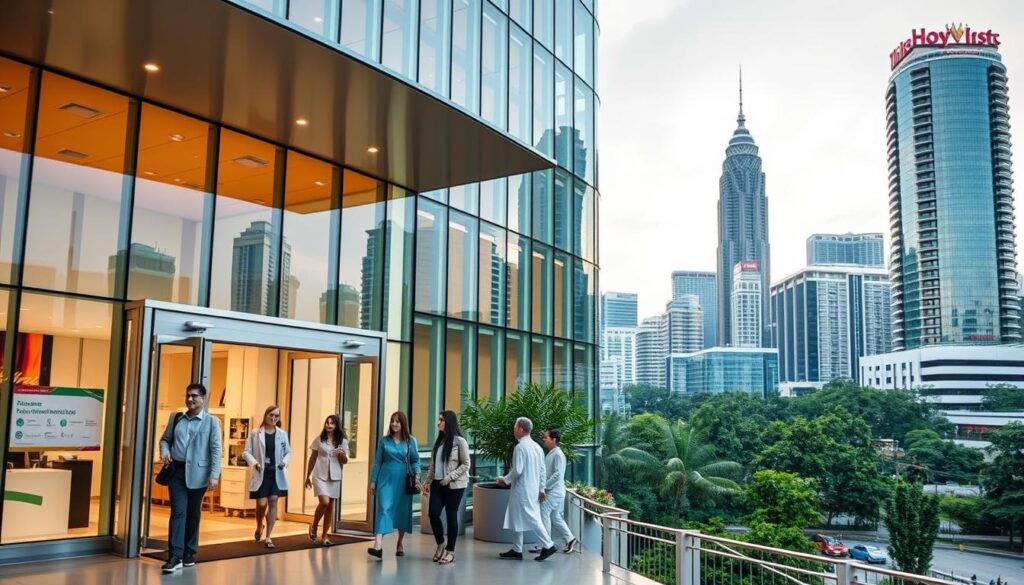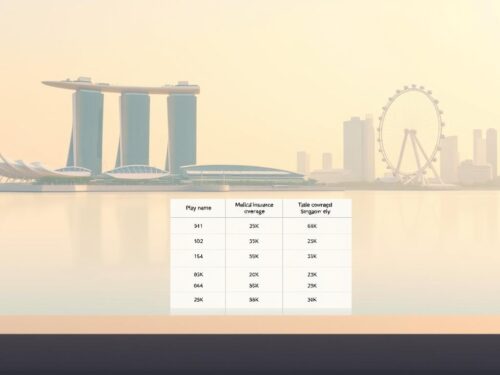Singapore’s healthcare system is efficient, but private coverage helps bridge gaps in medical expenses. With rising costs, choosing the right plan ensures peace of mind without breaking the bank. Seven major insurers offer Integrated Shield Plans, each with unique benefits.
Key factors like policy limits, rider options, and claim processing speed set providers apart. Balancing affordability with comprehensive coverage is crucial, especially with 2024 updates to MediSave payment rules. Premiums vary by age and preferred hospital class, so comparing options is essential.
Look for extended pre/post-hospitalization periods and emergency overseas treatment benefits. Whether you prioritize budget-friendly choices or premium protection, there’s a suitable plan for every need.
Key Takeaways
- Private coverage complements Singapore’s healthcare system.
- Seven insurers provide Integrated Shield Plans with varying benefits.
- Compare policy limits, riders, and claim processes.
- 2024 updates affect MediSave limits and co-payments.
- Premiums differ by age and hospital class preference.
Introduction to Health Insurance in Singapore
MediShield Life forms the foundation of Singapore’s healthcare safety net for citizens and PRs. This mandatory plan covers basic treatments at B2/C-class wards in public hospitals, with an annual limit of S$100,000. For higher comfort or private hospital stays, Integrated Shield Plans (IPs) are essential.
The two-tier system balances affordability and choice. Public wards cost significantly less but may have longer wait times. Private facilities offer faster access and premium amenities—at a higher price.
Since 2019, policyholders must pay at least 5% of hospital bills. This co-payment rule encourages responsible healthcare spending. Lower-income families receive additional subsidies to ease the burden.
For example, a 3-day stay in a B1 ward might cost S$3,000, while a private ward could exceed S$10,000. Without an IP, out-of-pocket expenses add up quickly, especially for chronic conditions.
CPF MediSave accounts help cover premiums, but withdrawals are capped. Riders once allowed full coverage, but today’s policies require shared responsibility. Choosing the right health insurance ensures financial protection without overpaying.
Understanding MediShield Life
Every citizen and PR in Singapore automatically gets basic medical protection through MediShield Life. This mandatory policy covers essential treatments like dialysis, chemotherapy, and day surgeries at public hospitals. Unlike private plans, it excludes dental, mental health, and pregnancy-related costs.
What Does MediShield Life Cover?
The coverage focuses on high-cost, critical care. For example, kidney dialysis has an annual limit of S$1,000 per month. Cancer treatments are partially covered, but patients may need top-ups for newer therapies.
If you choose a private hospital, reimbursements are pro-rated. A S$20,000 bill might only get 50% back. Public B2/C wards offer full claims, making them cost-effective for serious conditions.
Limitations to Know
Pre-existing conditions are covered, but deductibles apply. For ages 80+, the annual deductible is S$3,000. Low-income families get subsidies—up to 50% off premiums.
Compared to ASEAN peers like Thailand’s Universal Coverage Scheme, MediShield Life offers narrower but more predictable benefits. Renewals are guaranteed, even after major claims.
- Automatic enrollment: No paperwork for citizens/PRs.
- Outpatient coverage: Limited to specific chronic conditions.
- Emergency overseas care: Only for sudden illnesses, not routine check-ups.
What Are Integrated Shield Plans (IPs)?
Integrated Shield Plans (IPs) enhance Singapore’s basic medical safety net with customizable private benefits. These insurance plans combine MediShield Life’s core coverage with added perks like higher claim limits and access to premium hospital wards. Offered by seven private insurers, IPs let you tailor protection to your budget and healthcare preferences.
How IPs Complement MediShield Life
While MediShield Life covers basic treatments, IPs expand protection in three key ways:
- Higher annual limits: S$150,000–S$4.5M vs. MediShield’s S$100,000.
- Broader hospital choices: From B1-class to private facilities.
- Extended benefits: Pre/post-hospitalization care and overseas emergencies.
“IPs are designed to work seamlessly with MediShield Life—claims are automatically coordinated between both plans.”
Types of IPs: Standard, Class B1, Class A, and Private
IPs come in four tiers, each with distinct features:
Standard IPs
Government-regulated with fixed benefits for B1/public hospital stays. Covers 90% of bills after deductibles.
Class B1/A IPs
Upgrade to air-conditioned wards (B1) or single rooms (A). Adds S$200/day hospital cash benefits.
Private IPs
Top-tier plans for private hospitals. Includes annual health screenings and maternity coverage.
Example: An appendectomy costs S$8,000 in a private ward. A Private IP might cover S$7,500, while Standard IP reimburses only S$4,000.
Switching between insurers is allowed, but pre-existing conditions often face 12-month waiting periods. Compare shield plan riders—like full coverage for cancer drugs—before choosing.
Why You Need an Integrated Shield Plan
Medical expenses can quickly spiral beyond what basic plans cover. While MediShield Life provides essential protection, it reimburses only 25–30% of private hospital bills. An integrated shield bridges this gap, slashing out-of-pocket costs to 5–10%.
Where MediShield Life Falls Short
Basic coverage excludes many critical needs:
- High-cost treatments: A S$100,000 cancer bill might only get S$30,000 back.
- Experimental therapies: New drugs or procedures often aren’t covered.
- Mental health: Counseling and therapy require add-ons.
Advantages of Private Protection
Upgrading to a health insurance plan with IP features offers:
| Feature | MediShield Life | Integrated Shield |
|---|---|---|
| Private hospital coverage | 25–30% | 90–95% |
| Pre-hospitalisation | Not covered | Up to 13 months (AIA) |
| Rare diseases | Excluded | Included in premium IPs |
| Medical evacuation | No | Up to S$200,000 |
Additional benefits like second-opinion services and concierge care streamline recovery. For chronic conditions, extended physiotherapy post-hospitalisation ensures long-term support.
“IPs transform financial uncertainty into predictable costs—critical for serious illnesses.”
Best Health Insurance Singapore: Top Providers Compared
Seven major insurers compete in Singapore’s healthcare market, each offering distinct advantages. Whether you prioritize extended coverage or digital convenience, these insurance plans cater to diverse needs.
AIA HealthShield GoldMax
HealthShield Gold Max stands out with 100-day post-hospitalization care for critical illnesses. Its rider options include full coverage for cancer drugs and mental health therapy.
- Critical illness extension program
- Largest panel doctor network (1,200+ clinics)
Aviva MyShield
Aviva rewards long-term customers with multi-year premium discounts—up to 10% for 5-year commitments. Covers rare diseases like muscular dystrophy.
AXA Shield
Boasts Singapore’s highest annual limit (S$4.5M). Ideal for expats with international emergency coverage in 150+ countries.
Great Eastern GREAT SupremeHealth
Great Eastern’s HealthConnect concierge arranges specialist appointments within 48 hours. Chronic condition management includes free telehealth consultations.
NTUC Enhanced IncomeShield
Budget-friendly for groups (families or SMEs). Offers cashless claims at 500+ partnered clinics.
Prudential PRUShield
Focuses on chronic disease support, covering diabetes monitoring devices. Fastest digital claims (48-hour processing).
Raffles Shield
Unique emergency HIV coverage and direct billing at Raffles Hospital. Shield private plans include annual health screenings.
“Compare rider combinations—some insurers bundle mental health, while others excel in critical illness protection.”
Comparing Plan Tiers and Coverage
Choosing the right shield plan involves understanding how different tiers balance costs and benefits. While Standard IPs offer basic protection, higher-tier options unlock premium features for those needing extensive coverage.

Standard IPs vs. Enhanced Plans
Standard IPs provide essential coverage with an annual limit of S$150,000, suitable for public hospital stays. Higher-tier plans, like Private IPs, boost this to S$4.5M and include:
- Access to private hospitals and single rooms
- Coverage for congenital conditions
- Extended outpatient cancer treatments
Policy Limits and Claim Benefits
Key differences emerge in claim processing and benefits. For example, AIA processes median claims same-day, while Prudential averages 1–4 days. Higher tiers also reduce co-insurance to 5% versus Standard IPs’ 10%.
| Feature | Standard IP | Private IP |
|---|---|---|
| Annual Limit | S$150,000 | S$4.5M |
| Ward Class | B1/Public | Private |
| Overseas Emergency | Limited | Full coverage |
| Pre-Hospitalization | 90 days | 365 days |
For chronic conditions, higher tiers often waive waiting periods. Government data shows 69% of rejections occur due to unmet deductibles—highlighting the need for careful policy selection.
“Upgrading to a Private IP can save S$50,000+ for complex treatments, offsetting higher premiums over time.”
Cost of Integrated Shield Plans
Premium rates for enhanced medical coverage vary significantly based on age and payment methods. A 25-year-old might pay between S$132-S$300 per year, while costs rise steadily with each decade. Understanding these patterns helps avoid budget shocks during renewal periods.
Breaking Down Premiums by Age
Insurers use age brackets to calculate costs, with sharp increases after 40. Here’s what to expect:
- Under 30: Most affordable tier (S$130-S$280/year)
- 31-40: 15-20% higher than younger groups
- 41-50: Critical jump (often 50% more than 30s)
- 51+: Annual increases of 8-12%
Smokers pay 15-25% extra across all age groups. Some insurers offer non-smoker discounts after three smoke-free years.
MediSave Payment Rules
CPF limits how much you can use for premiums each year:
| Age Group | Annual MediSave Limit |
|---|---|
| Below 40 | S$300 |
| 41-70 | S$600 |
| 71+ | S$900 |
Balancing cash and MediSave payments matters. For a S$500 premium at age 45:
- S$600 from MediSave (covers full cost)
- Leftover S$100 carries over
“Porting policies between insurers resets age-based pricing—compare carefully before switching.”
Multi-policy discounts (up to 10%) and family bundles help reduce long-term costs. Some plans let freeze premiums for 3-5 years, locking in lower rates.
Key Features to Look For
Smart policy selection goes beyond premiums—focus on critical features that impact real-world usage. Extended pre-post-hospitalisation coverage and emergency protections often matter more than upfront costs. Here’s how to identify plans that deliver when you need them most.

Pre- and Post-Hospitalisation Coverage
Top-tier plans like AIA HealthShield cover 13 months of pre-hospitalization diagnostics and 100 days of post-care. Compare this to basic coverage, which may only include 90 days total.
Key differences across insurers:
- Great Eastern: 365 days pre-hospitalization for chronic conditions.
- Prudential: Covers traditional Chinese medicine post-surgery.
- NTUC: Limits day surgery claims to S$5,000 per procedure.
Emergency Overseas Treatment
Travel emergencies can bankrupt unprepared travelers. AXA Shield and Cigna include evacuation services up to S$200,000, while others cap at S$50,000.
Check for:
- Direct billing with international hospitals.
- Coverage for experimental treatments abroad.
Riders and Add-Ons
Riders customize plans but cost extra. Mental health riders (AIA) add 20% to premiums but cover therapy sessions. Chronic disease programs (Prudential) monitor conditions like diabetes at no extra fee.
| Rider | Cost (Monthly) | Key Benefit |
|---|---|---|
| Cancer Drug | S$15–S$30 | Full coverage for immunotherapy |
| Wellness | S$10 | Gym discounts + annual screenings |
“Riders are like insurance for your insurance—they fill gaps standard policies ignore.”
Balance costs with benefits. A S$20/month rider might save S$10,000 in uncovered treatments later.
Cheapest Integrated Shield Plans in Singapore
Finding budget-friendly medical coverage in Singapore doesn’t mean sacrificing essential benefits. By comparing premiums and policy features, you can secure robust protection without overspending. NTUC and Raffles Shield lead as top picks for different needs.
Affordable Options by Age Group
NTUC Enhanced IncomeShield offers the lowest rates for younger adults. A 35-year-old pays just S$132/year for Standard coverage—half the cost of some competitors. Older age bands see steeper increases:
| Age | NTUC (S$/year) | Industry Average |
|---|---|---|
| 25–30 | 120 | 180 |
| 31–40 | 132 | 210 |
| 41–50 | 320 | 450 |
High-deductible plans reduce costs further. Opting for a S$3,000 deductible lowers premiums by 25%—ideal for those rarely hospitalized.
Value-for-Money Picks
Raffles Shield A with a rider delivers premium benefits at mid-tier pricing. Key perks include:
- Annual health screenings (worth S$300)
- Direct billing at Raffles Hospital
- No claim-based premium hikes
“Pairing a basic plan with strategic riders often beats expensive comprehensive policies.”
Families save up to 15% with multi-person discounts. Paying premiums via MediSave maximizes CPF funds while keeping cash free for other needs.
Private Hospital Plans: Are They Worth It?
Private hospital plans offer premium care but come with higher price tags—are they right for you? These plans cover luxury amenities and faster specialist access, yet cost 3–5x more than Standard IPs. Raffles Shield, for example, extends Class A rates to its partnered facilities.

Coverage for Private Hospitals
Top-tier plans include perks like:
- Daily ward rates: S$800–S$2,000 for private rooms.
- Specialist fees: Up to 90% coverage for surgeons.
- Cashless admissions at 30+ hospitals islandwide.
Maternity packages often add prenatal scans and private delivery suites. Experimental treatments like immunotherapy may require pre-approval.
Cost vs. Benefits Analysis
Weighing premiums against benefits reveals key trade-offs:
| Feature | Standard IP | Private Plan |
|---|---|---|
| Annual Premium (Age 40) | S$320 | S$1,500 |
| Hospital Bill Coverage | 70% | 95% |
| Health Screenings | None | Included |
“Private plans excel for complex care but may over-cover routine needs.”
For frequent travelers or chronic conditions, the higher coverage justifies the costs. Others might prefer rider-enhanced Standard IPs to balance affordability.
How to Choose the Right Plan for You
Your ideal coverage depends on lifestyle factors and financial priorities. A 45-year-old non-smoker might pay S$132 annually for basic protection, but individual needs vary widely. Start by evaluating both medical requirements and payment methods like CPF MediSave.
Assessing Your Healthcare Profile
Family medical history plays a crucial role. Those with diabetes or heart disease in their lineage should prioritize chronic condition riders. Occupation risks matter too—construction workers need stronger accident coverage than office employees.
Consider these factors:
- Retirement planning: Project 20+ years of premium payments
- Travel frequency: Overseas emergency benefits for frequent flyers
- Existing corporate plans that may reduce personal needs
Balancing Costs and Benefits
CPF MediSave limits help offset premiums, but cash payments may be needed for comprehensive riders. Inflation protection features prevent surprise rate hikes as you age.
| Need | Recommended Plan | Annual Cost Range |
|---|---|---|
| Chronic conditions | Prudential with disease management | S$450–S$800 |
| Frequent travel | AXA Shield with global coverage | S$600–S$1,200 |
| Budget-conscious | NTUC Standard IP | S$132–S$300 |
“Match your policy to life stages—young professionals need different benefits than retirees.”
Private hospital access costs 3x more but may be unnecessary if you prefer public facilities. Always compare rider combinations before finalizing your plan.
Common Exclusions and Limitations
No medical plan covers everything—knowing limitations helps avoid financial surprises. While policy documents detail coverage, exclusions often appear in fine print. Review these before signing to prevent claim disputes later.
Pre-Existing Conditions
Most insurers impose 12-month waiting periods for conditions like diabetes or heart disease. Some cover partial treatments during this time, but full benefits activate only afterward. MediShield Life includes pre-existing issues but with higher deductibles.

- Coverage often excludes experimental gene therapies
- Hereditary cancer screenings may require separate riders
- Transplant waiting periods range 6-24 months
What’s Not Covered
Cosmetic procedures rarely qualify unless medically necessary (e.g., post-accident reconstruction). Other common exclusions include:
| Exclusion | Typical Terms |
|---|---|
| Dangerous sports | Skydiving, pro wrestling injuries |
| Mental health | Limited to 20 therapy sessions/year |
| Pandemics | Viral outbreaks may trigger special clauses |
“Always verify HIV/AIDS coverage—some plans cap benefits at S$10,000 annually.”
Alternative medicine like acupuncture often requires add-ons. War zone injuries and self-harm incidents typically void claims entirely.
Paying for Your Health Insurance
Managing healthcare costs starts with understanding payment options. Singapore’s system offers multiple ways to fund coverage, from CPF deductions to cash installments. Choosing the right method affects both immediate budgets and long-term financial planning.
Smart Use of MediSave Accounts
Your CPF MediSave account automatically covers full MediShield Life premiums. For enhanced plans, withdrawal limits apply based on age:
- Under 40: S$300/year
- 41-70: S$600/year
- Seniors 71+: S$900/year
Families can pool MediSave funds across three generations. This helps when covering children’s or elderly parents’ premiums.
Handling Out-of-Pocket Expenses
Private plan portions often require cash payments. Many insurers offer:
| Option | Details |
|---|---|
| Monthly installments | 0% interest for 12 months |
| Corporate billing | Direct deduction from salary |
| GIRO discounts | 3-5% off annual payments |
“Late payments trigger 30-day grace periods before policy lapse—set payment reminders to avoid gaps in coverage.”
Tax relief of up to S$1,500 per year applies to cash premiums. Keep receipts for IRAS filings.
For large hospital bills, check if your insurer offers direct billing. This eliminates upfront payments at partnered facilities.
Low-income households may qualify for Medifund assistance. Social workers at public hospitals can guide applicants through the process.
Claims Process and Tips
Navigating medical claims doesn’t have to be stressful with the right preparation. Most insurers offer multiple filing methods, with digital options processing 50% faster. AIA and Great Eastern lead the industry with same-day approvals for straightforward cases.
Filing Your Claim: Step-by-Step
Whether submitting digitally or via paper forms, these steps ensure smooth processing:
- Notify your insurer within 24-48 hours of hospitalization
- Complete claim forms with doctor-certified diagnosis codes
- Attach itemized hospital bills and payment receipts
Processing Timelines Compared
Speed varies by complexity and submission method:
| Insurer | Digital Claims | Paper Claims |
|---|---|---|
| AIA | 1-3 days | 5-7 days |
| Great Eastern | Same day | 3-5 days |
| NTUC | 2-4 days | 7-10 days |
Required Documentation
Missing paperwork causes 70% of delays. Always include:
- Original discharge summary
- Itemized bill with GST breakdown
- MC or doctor’s referral letter
“Photograph documents before submitting—insurers occasionally misplace attachments during peak periods.”
Resolving Issues
For disputed claims:
- Request written explanation of denials
- Submit additional medical reports within 14 days
- Escalate to insurance ombudsman if unresolved after 30 days
Fraud prevention measures include biometric verification for high-value claims. Always declare other active coverage to avoid coordination conflicts.
Health Insurance for Foreigners in Singapore
Expats in Singapore need tailored medical protection beyond what local plans offer. Work Permit holders must maintain at least S$15,000 in coverage, while Employment Pass professionals often require more comprehensive solutions. Understanding visa-specific rules helps avoid compliance issues.
Tailored Options for Global Residents
Short-term visitors benefit from travel policies with emergency health insurance features. Long-term residents should consider:
- Local Integrated Shield Plans (if eligible)
- Global policies with portability between countries
- Employer-sponsored group coverage
AXA’s international plan provides S$4.5M in protection—ideal for frequent travelers. Local insurers like Prudential offer expat-friendly riders for newborn care.
When International Coverage Excels
Global international health insurance outperforms local options in three key areas:
| Feature | Local Plans | Global Plans |
|---|---|---|
| Evacuation | S$50,000 limit | Unlimited |
| Network Hospitals | Singapore only | 5,000+ worldwide |
| Pre-existing Conditions | 12-month wait | Immediate (some) |
“Repatriation benefits in global policies can save families S$100,000+ during medical emergencies abroad.”
New arrivals should verify pre-departure medical check requirements. Some insurers waive these for applicants under 40 with clean insurance histories.
For families, ensure policies cover:
- Childbirth complications
- Vaccination schedules
- School sports injuries
Annual premiums range from S$1,200 for basic protection to S$10,000+ for premium global coverage. Always compare renewal terms—some insurers hike rates after claims.
Conclusion
Selecting the right protection requires balancing current needs with future healthcare scenarios. For most families, NTUC, AIA, and Prudential offer the best value—combining affordability with critical illness support.
Digital tools now simplify claims, with apps providing real-time updates. The government continues encouraging shared responsibility through co-payment models.
Review your plan annually, especially after life changes like marriage or career shifts. Use comparison tools from CompareFirst to check for better options.
Remember: adequate coverage today prevents financial stress tomorrow. Bookmark insurer portals for easy policy management and stay informed about MediSave updates.



